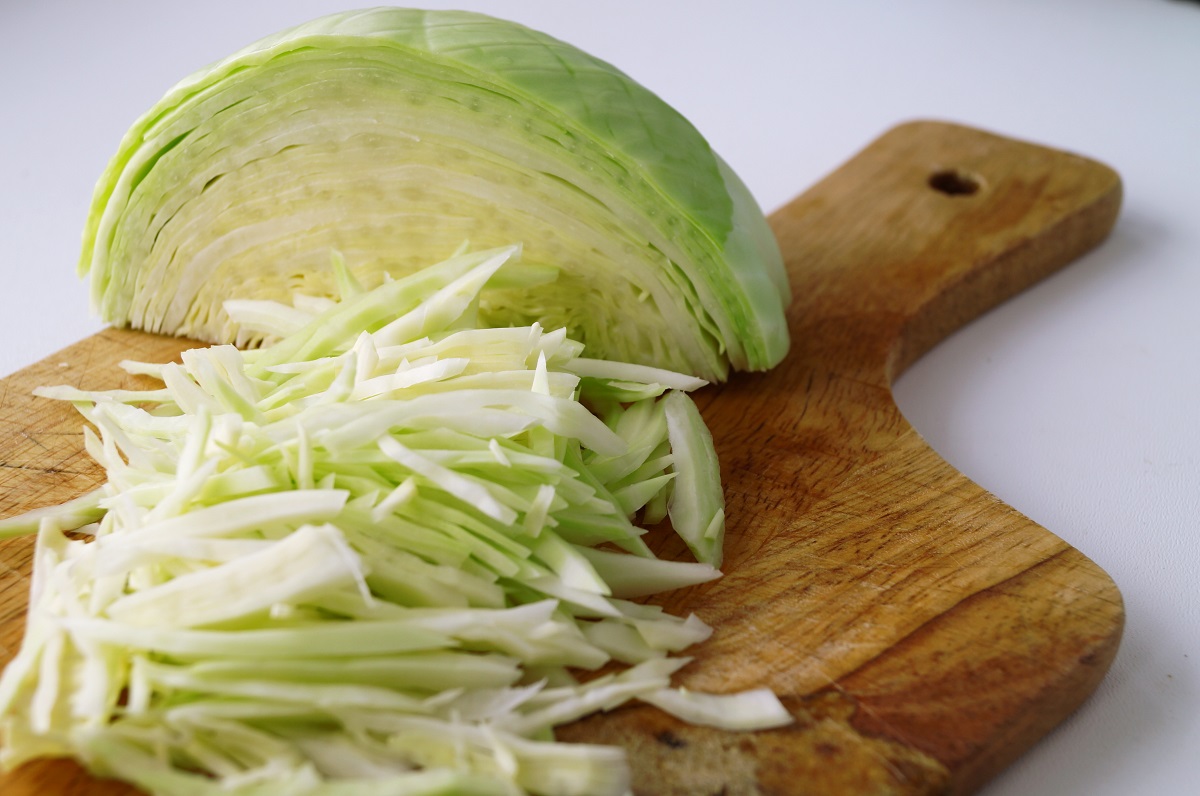

Articles
How To Store Cut Cabbage Long Term
Modified: February 22, 2024
Learn how to store cut cabbage for an extended period of time with these helpful articles. Keep your cabbage fresh and crisp for longer with our expert tips.
(Many of the links in this article redirect to a specific reviewed product. Your purchase of these products through affiliate links helps to generate commission for Storables.com, at no extra cost. Learn more)
Introduction
When it comes to preserving the freshness and nutritional value of vegetables, finding the right storage method is essential. Cabbage is a versatile and nutritious vegetable that can be enjoyed in various dishes, but what should you do if you have leftover cut cabbage? Storing cut cabbage long term requires careful consideration to maintain its texture, flavor, and health benefits.
There are several factors to consider before storing cut cabbage, such as the age and quality of the cabbage, the desired storage length, and the intended use of the cabbage in future recipes. By understanding these factors, you can select the most suitable storage method for your cut cabbage.
Key Takeaways:
- Preserve the freshness and nutritional value of cut cabbage by considering factors like age, storage length, intended use, and available space. Choose from freezing, fermenting, dehydrating, vacuum sealing, or pickling methods for long-term storage.
- Follow specific steps for each storage method, such as blanching and freezing for freezing cut cabbage, massaging and fermenting for fermenting cut cabbage, dehydrating and rehydrating for dehydrating cut cabbage, vacuum sealing and labeling for vacuum sealing cut cabbage, and preparing pickling solution for pickling cut cabbage.
Read more: How To Store Cabbage Long Term
Factors to Consider Before Storing Cut Cabbage
Before you embark on storing cut cabbage long term, it’s important to take certain factors into consideration. These factors will help determine the best storage method and ensure that your cabbage stays fresh and flavorful.
1. Age and Quality of the Cabbage: The age and quality of the cabbage play a significant role in determining how long it can be stored and the best method for preservation. Fresh, young cabbages are ideal for long-term storage and will have a longer shelf life compared to older cabbages.
2. Storage Length: Consider how long you plan to store the cut cabbage. Some methods are better suited for short-term storage, while others are more effective for long-term preservation. Determining the storage length will help you choose the most appropriate method.
3. Intended Use: Think about how you plan to use the cut cabbage in the future. Will you be using it in soups and stews, salads, or stir-fries? The intended use may influence the storage method you choose, as different methods can affect the texture and flavor of the cabbage.
4. Available Storage Space: Assess the amount of storage space you have available. Some methods, like freezing, may require more space compared to other methods like vacuum sealing or pickling. It’s important to consider your available storage options before selecting a method.
By taking these factors into account, you can make an informed decision about the best method for storing your cut cabbage. Whether you want to freeze it for future use or ferment it for a unique flavor profile, understanding these factors will help you effectively preserve the quality of your cabbage.
Methods for Storing Cut Cabbage Long Term
When it comes to storing cut cabbage long term, there are several methods you can choose from. Each method offers its own benefits and considerations, so let’s explore some of the most popular options:
- Freezing Cut Cabbage: Freezing is a common method for preserving various vegetables, and cut cabbage is no exception. To freeze cut cabbage, start by blanching it in boiling water for a couple of minutes, then quickly transfer it to an ice bath to stop the cooking process. Drain the cabbage well, portion it into freezer-safe bags or containers, and remove as much air as possible. Label and date the containers before placing them in the freezer. Frozen cut cabbage can last for up to 12 months.
- Fermenting Cut Cabbage: Fermenting cabbage creates a unique and tangy product known as sauerkraut. To ferment cut cabbage, mix it with salt and any desired seasonings in a large container or fermentation crock. Press down on the cabbage to release its juices, ensuring it’s fully submerged. Cover the container loosely with a breathable cloth and let it ferment at room temperature for several weeks. Once fermented, transfer the sauerkraut to airtight jars and store in the refrigerator for several months.
- Dehydrating Cut Cabbage: Dehydrating cabbage removes the moisture from the vegetable, allowing it to be stored for an extended period. To dehydrate cut cabbage, thinly slice or shred it and spread it evenly on dehydrator trays. Dry the cabbage at a low temperature until it becomes crispy and brittle. Store the dehydrated cabbage in airtight containers or vacuum-sealed bags in a cool, dry place. Properly dehydrated cabbage can last for several months.
- Vacuum Sealing Cut Cabbage: Vacuum sealing is an excellent method for long-term storage. Simply pack the cut cabbage into vacuum-sealed bags, remove the air using a vacuum sealer, and seal the bags tightly. The vacuum-sealed bags provide airtight protection, preserving the freshness and flavor of the cabbage. Store the sealed bags in a cool pantry, cupboard, or refrigerator for several months.
- Pickling Cut Cabbage: Pickling cut cabbage not only extends its shelf life but also imparts a delicious tangy flavor. To pickle cabbage, prepare a pickling solution made of vinegar, water, salt, sugar, and spices. Place the cut cabbage in sterilized jars and pour the pickling solution over it until fully submerged. Seal the jars tightly and refrigerate them for at least a few days to allow the flavors to develop. Pickled cabbage can be stored in the refrigerator for several months.
These methods offer various options for storing cut cabbage long term. Consider your preferences, available resources, and desired flavors when selecting the best method for preserving your cabbage.
Option 1: Freezing Cut Cabbage
Freezing cut cabbage is a convenient and effective method for long-term preservation. By properly freezing your cabbage, you can maintain its texture and nutritional value for future use. Here is a step-by-step guide on how to freeze cut cabbage:
- Prepare the Cut Cabbage: Start by washing the cabbage thoroughly under cold running water. Remove any damaged or discolored outer leaves. Cut the cabbage into desired sizes, such as wedges, slices, or shredded pieces, depending on your preference and intended use.
- Blanch the Cabbage: Blanching is essential to halt enzyme activity and maintain the color and crispness of the cabbage. Bring a large pot of water to a rolling boil and carefully place the cut cabbage into the boiling water. Blanch small batches of cabbage for about 1 to 2 minutes, ensuring that all the pieces are submerged. Be cautious not to overcook the cabbage, as it may become mushy.
- Cool in an Ice Bath: Immediately transfer the blanched cabbage to an ice bath. The ice bath will rapidly cool down the cabbage and halt the cooking process. Leave the cabbage in the ice bath for the same duration as the blanching time.
- Drain and Dry: Once the cabbage has been adequately cooled, drain it thoroughly to remove excess moisture. Use a salad spinner or pat the cabbage with paper towels to remove any remaining water. Dry cabbage is important to prevent ice crystals from forming during freezing.
- Portion and Package: Divide the drained and dried cabbage into portions suitable for your future needs. You can either use freezer-safe plastic bags or containers. Make sure to remove as much air as possible from the packaging to prevent freezer burn. Label the bags or containers with the date and contents for easy identification later on.
- Freeze: Place the packaged cabbage in the freezer, making sure to arrange them in a single layer for faster freezing. Avoid stacking them on top of each other until they are completely frozen. Once frozen, you can stack the packages to save space.
- Storage: Frozen cut cabbage can be stored for up to 12 months. It is recommended to consume the cabbage within this time frame for the best quality. Frozen cabbage is great for adding to soups, stews, stir-fries, and other cooked dishes.
By following these steps, you can successfully freeze your cut cabbage and enjoy the convenience of having it readily available for your favorite recipes. Freezing is a versatile method that allows you to preserve the freshness and nutritional value of the cabbage while maintaining its flavor and texture.
Option 2: Fermenting Cut Cabbage
Fermenting cut cabbage is a fantastic way to not only preserve its shelf life but also create a tangy and flavorful condiment known as sauerkraut. The fermentation process promotes the growth of beneficial bacteria, which not only enhances the taste but also increases the digestibility of the cabbage. Here’s a step-by-step guide on how to ferment cut cabbage:
- Prepare the Cabbage: Start by removing the outer leaves of the cabbage and rinsing it thoroughly under cold running water. Slice the cabbage into thin strips or shred it using a sharp knife or a shredder.
- Add Salt and Seasonings: In a large bowl, combine the shredded cabbage with kosher salt or pickling salt. The salt helps draw out moisture from the cabbage and prevents the growth of unwanted bacteria. You can also add seasonings like caraway seeds, juniper berries, or chili flakes for added flavor.
- Massage and Press: Using your hands, massage the cabbage and salt mixture well. This process helps break down the cell walls, release the cabbage’s natural juices, and form a brine. Firmly press down on the cabbage to compact it and ensure that it is submerged in its own juices. Continue massaging and pressing for a few minutes until enough liquid is released to cover the cabbage.
- Transfer to a Fermentation Container: Transfer the salted and pressed cabbage into a clean fermentation vessel. This could be a fermentation crock, glass jar, or food-grade plastic container. Pack the cabbage tightly, making sure there is enough space at the top for expansion. Pour any remaining brine over the cabbage to ensure it is fully submerged.
- Weight and Cover: Place a weight on top of the cabbage to keep it submerged in the brine. This can be a clean, food-safe object like a glass or ceramic weight or a small, clean plate with a heavy object on top. Cover the vessel loosely with a breathable cloth or put on the fermentation crock lid with an airlock system to allow gas to escape.
- Fermentation: Store the fermentation vessel at room temperature, ideally around 70°F (21°C), for several weeks. During this time, the beneficial bacteria will ferment the cabbage, converting its sugars into lactic acid and producing sauerkraut. Taste the sauerkraut periodically to check its flavor and texture. Fermentation typically takes 2 to 4 weeks, depending on your preference.
- Transfer and Store: Once the sauerkraut reaches your desired taste, transfer it to airtight jars or containers and store it in the refrigerator. The cold temperature will slow down the fermentation process and help preserve the sauerkraut for several months. It will continue to develop flavor over time.
By following these steps, you can successfully ferment your cut cabbage and create homemade sauerkraut. Fermented cabbage not only provides a tangy and delicious addition to sandwiches, salads, and hot dogs but also contains probiotics that promote gut health. Experiment with different seasonings and enjoy the benefits of homemade sauerkraut!
Store cut cabbage long term by wrapping it tightly in plastic wrap and placing it in the crisper drawer of the refrigerator. This will help keep it fresh for up to 2 weeks.
Read more: How To Store Cut Cabbage
Option 3: Dehydrating Cut Cabbage
Dehydrating cut cabbage is a fantastic method for long-term storage, as it removes the moisture from the vegetable while preserving its flavor and nutrients. Dehydrated cabbage can be used in soups, stews, stir-fries, and even as a crunchy snack. Here’s how you can dehydrate cut cabbage:
- Prepare the Cabbage: Start by washing the cabbage thoroughly under cold running water. Remove any damaged or discolored outer leaves. Cut the cabbage into thin slices or shred it into small pieces, depending on your preference and intended use.
- Blanch the Cabbage (Optional): Blanching the cabbage before dehydrating it can help retain its vibrant green color. You can blanch the cabbage by placing the sliced or shredded cabbage in boiling water for a brief 1 to 2 minutes. Then, transfer the blanched cabbage into an ice bath to cool it down and halt the cooking process. Drain the cabbage well.
- Spread on Dehydrator Trays: Arrange the cabbage slices or shreds in a single layer on the dehydrator trays. Make sure to leave space between the pieces to allow for air circulation and even drying. If you prefer, you can lightly season the cabbage with salt or other spices for added flavor.
- Dehydrate the Cabbage: Set your dehydrator to a low temperature, around 125°F (52°C), and let it run for several hours or until the cabbage becomes crispy and brittle. The drying time may vary depending on the thickness of the cabbage slices and the moisture content. Rotate the trays occasionally for even drying.
- Test for Dryness: To ensure that the cabbage is thoroughly dehydrated, remove a piece from the dehydrator and allow it to cool. The cabbage should be crispy and break easily. If it feels soft or pliable, return it to the dehydrator for additional drying time.
- Cool and Store: Once the cabbage is completely dehydrated, remove it from the dehydrator and let it cool completely. Properly store the dehydrated cabbage in airtight containers, such as glass jars or vacuum-sealed bags, in a cool, dry place. Label the containers with the date and contents for easy identification.
- Rehydrating and Using Dehydrated Cabbage: To use the dehydrated cabbage in your cooking, simply rehydrate it by soaking it in warm water for a few minutes or adding it directly to soups or stews. The cabbage will absorb the liquid and return to a softer texture.
By dehydrating cut cabbage, you can extend its shelf life and have a versatile ingredient available for various dishes. Whether you use it as a flavor-packed addition to your meals or enjoy it as a nutrient-rich snack, dehydrated cabbage is a practical and delicious option for long-term storage.
Option 4: Vacuum Sealing Cut Cabbage
Vacuum sealing is a popular method for preserving the freshness and flavor of a wide range of foods, including cut cabbage. By removing the air from the packaging, vacuum sealing helps to prevent oxidation and freezer burn, allowing the cabbage to maintain its quality for an extended period. Here’s a step-by-step guide on how to vacuum seal cut cabbage:
- Prepare the Cut Cabbage: Begin by preparing the cabbage. Wash it thoroughly under cold running water, removing any damaged or discolored outer leaves. Cut the cabbage into desired sizes, such as wedges or slices, depending on your preference and intended use.
- Blanch the Cabbage (Optional): Blanching the cabbage before vacuum sealing is optional but can help retain its color and texture. To blanch, place the cabbage in boiling water for 1 to 2 minutes, then quickly transfer it to an ice bath to cool. Drain the cabbage well before proceeding.
- Portion the Cabbage: Divide the cut cabbage into portion sizes that you’ll typically use in your recipes. This makes it easier to take out only the amount you need without thawing the entire package.
- Choose Vacuum-Seal Bags or Containers: Select vacuum-seal bags or containers that are suitable for your cabbage portions. Ensure the bags or containers are specifically designed for vacuum sealing to maintain the integrity of the seal. Make sure they are clean and dry before use.
- Fill and Seal: Place the cabbage portions into the vacuum-seal bags or containers, leaving some headspace at the top. If using bags, seal one end of the bag using the vacuum sealer’s seal function or a heat sealer. If using containers, secure the lids tightly.
- Vacuum Seal: Insert the open end of the vacuum-seal bag into the vacuum sealer machine and follow the manufacturer’s instructions for vacuum sealing. The machine will remove the air from the bag and create an airtight seal. If using containers, use a vacuum sealer with an attachment hose to extract the air from the container before sealing.
- Label and Store: Label the vacuum-sealed bags or containers with the date and contents for easy identification. Store the vacuum-sealed cabbage in the freezer or refrigerator, depending on your preferred storage method. Vacuum-sealed cabbage can last for several months in the freezer and several weeks in the refrigerator.
Vacuum-sealed cut cabbage retains its freshness, flavor, and nutritional value for an extended period. When you’re ready to use the cabbage, simply thaw it in the refrigerator or cook it from frozen. The vacuum-sealed packaging ensures that the cabbage remains protected and ready to be incorporated into your favorite recipes.
Option 5: Pickling Cut Cabbage
Pickling is a popular method for preserving vegetables, and it’s a fantastic way to store cut cabbage long term. By pickling cabbage, you not only extend its shelf life but also create a tangy and flavorful condiment that can be enjoyed in a variety of dishes. Here’s a step-by-step guide on how to pickle cut cabbage:
- Prepare the Cabbage: Start by thoroughly washing the cabbage under cold running water. Remove any damaged or discolored outer leaves. Slice the cabbage into thin strips or shred it, depending on your preference and intended use.
- Prepare the Pickling Solution: In a large pot, combine equal parts water and vinegar. You can use white vinegar, apple cider vinegar, or rice vinegar depending on your taste preferences. Add sugar, salt, and any desired spices (such as mustard seeds, peppercorns, or garlic) to the pot and bring the mixture to a boil. Stir until the sugar and salt have dissolved.
- Pack the Cabbage in Jars: Pack the cut cabbage tightly into sterilized jars, leaving about an inch of headspace at the top. You can layer the cabbage with additional seasonings like dill, bay leaves, or chili flakes for added flavor. The seasonings can be placed between the layers or sprinkled on top.
- Add Pickling Solution: Pour the hot pickling solution into the jars, making sure that the cabbage is fully submerged. Leave about half an inch of headspace to allow for expansion during fermentation. Use a clean utensil to remove any air bubbles and ensure the cabbage is packed tightly. Wipe the rims of the jars clean with a clean cloth.
- Seal the Jars: Place sterilized lids on the jars and screw them on tightly. If you’re using mason jars, the heat from the pickling solution will create a vacuum seal as it cools down. This is indicated by the lids concaving inward. If you’re using jars without a vacuum seal, you can store them in the refrigerator.
- Store and Ferment: Store the sealed jars in a cool, dark place, such as a pantry or cupboard. The pickled cabbage will ferment over time, developing its signature tangy flavor. The fermentation process typically takes a couple of days to a few weeks, depending on the desired taste. It’s important to periodically check the jars for any signs of spoilage, such as mold or off smells.
- Refrigerate and Enjoy: Once the pickled cabbage has reached your desired level of fermentation, transfer the jars to the refrigerator. The cold temperature will slow down the fermentation process and help preserve the flavor and texture of the pickled cabbage. The pickled cabbage can be stored in the refrigerator for several months.
Pickled cabbage adds a burst of flavor to sandwiches, salads, tacos, or as a side dish. Its tangy taste and crunchy texture make it a versatile condiment for many dishes. With the pickling method, you can enjoy the deliciousness of cabbage all year round.
Tips for Properly Storing Cut Cabbage
To ensure optimal freshness and quality, here are some essential tips for properly storing cut cabbage:
- Choose Fresh Cabbage: Select fresh and high-quality cabbage for the best results. Look for cabbage heads that are firm, with vibrant green or purple leaves and no signs of wilting or discoloration.
- Store Whole Cabbage: If possible, try to store cabbage in its whole form rather than cutting it. Whole cabbage heads have a longer shelf life compared to cut cabbage.
- Use Airtight Containers: When storing cut cabbage, use airtight containers to prevent air exposure and moisture loss. This helps maintain its crunchiness and prevents it from becoming limp or dry.
- Refrigerate Properly: Place the cut cabbage in the refrigerator as soon as possible after preparing it. The ideal temperature for storing cabbage is between 32°F (0°C) and 40°F (4°C). Keep the cabbage away from other fruits and vegetables, as they can release ethylene gas and accelerate spoilage.
- Wrap with Plastic Wrap: To keep the cut cabbage fresh, you can wrap it tightly with plastic wrap. Make sure all exposed cut surfaces are covered, minimizing air contact.
- Use within a Week: Cut cabbage is best consumed within a week of preparation for optimal taste and texture. As time goes by, the cabbage will gradually lose its crispiness and nutritive value.
- Separate Outer Leaves: If the outer leaves of the cabbage become wilted or damaged, remove them before storing the rest. This will help maintain the freshness of the remaining cabbage.
- Rehydrate Dehydrated Cabbage: If you have dehydrated cabbage that you wish to store long term, rehydrate it before use. Soak the dehydrated cabbage in warm water for a few minutes until it regains its texture.
- Inspect for Spoilage: Before using cut cabbage, always inspect it for any signs of spoilage, such as mold, off odors, or sliminess. Discard any cabbage that shows these signs.
- Utilize Different Storage Methods: Consider using various storage methods, such as freezing, fermenting, dehydrating, vacuum sealing, or pickling, depending on your preferences and intended use. Each method has its benefits and unique flavors.
By following these tips, you can extend the shelf life of cut cabbage and maintain its freshness and nutritional value. Proper storage ensures that you can enjoy delicious cabbage in your meals for longer periods of time.
Read more: How To Store Cut Cabbage In The Refrigerator
Conclusion
Storing cut cabbage long term is a practical way to preserve its freshness, texture, and nutritional benefits. Whether you have leftover cabbage from a recipe or bought a larger quantity than needed, utilizing the right storage method ensures that you can enjoy this versatile vegetable for a longer period of time.
Before storing cut cabbage, consider factors such as the age and quality of the cabbage, desired storage length, intended use, and available storage space. These considerations will help you choose the most suitable method for preserving your cabbage.
Options for storing cut cabbage long term include freezing, fermenting, dehydrating, vacuum sealing, and pickling. Each method offers unique benefits and flavors. Freezing maintains the crispness of the cabbage, while fermenting creates tangy sauerkraut. Dehydrating provides a convenient and shelf-stable option, while vacuum sealing prevents oxidation and freezer burn. Pickling adds a flavorful kick to cabbage with a tangy twist.
By following the step-by-step instructions for each method and adhering to proper storage techniques, you can successfully store cut cabbage and enjoy it in various dishes. Be sure to label and date your stored cabbage containers for easy identification and rotation.
Remember to incorporate the storage methods that align with your preferences and intended use of the cabbage. Whether you choose to freeze it for future stews and stir-fries, ferment it into tangy sauerkraut, dehydrate it for a crunchy snack, vacuum seal it for convenience, or pickle it for a zesty condiment, the choice is yours!
Proper storage of cut cabbage not only reduces food waste but also allows you to enjoy this nutritious vegetable all year round. So, the next time you find yourself with leftover cut cabbage, don’t hesitate to utilize these storage methods and relish the flavors and benefits of cabbage in your favorite recipes!
Frequently Asked Questions about How To Store Cut Cabbage Long Term
Was this page helpful?
At Storables.com, we guarantee accurate and reliable information. Our content, validated by Expert Board Contributors, is crafted following stringent Editorial Policies. We're committed to providing you with well-researched, expert-backed insights for all your informational needs.
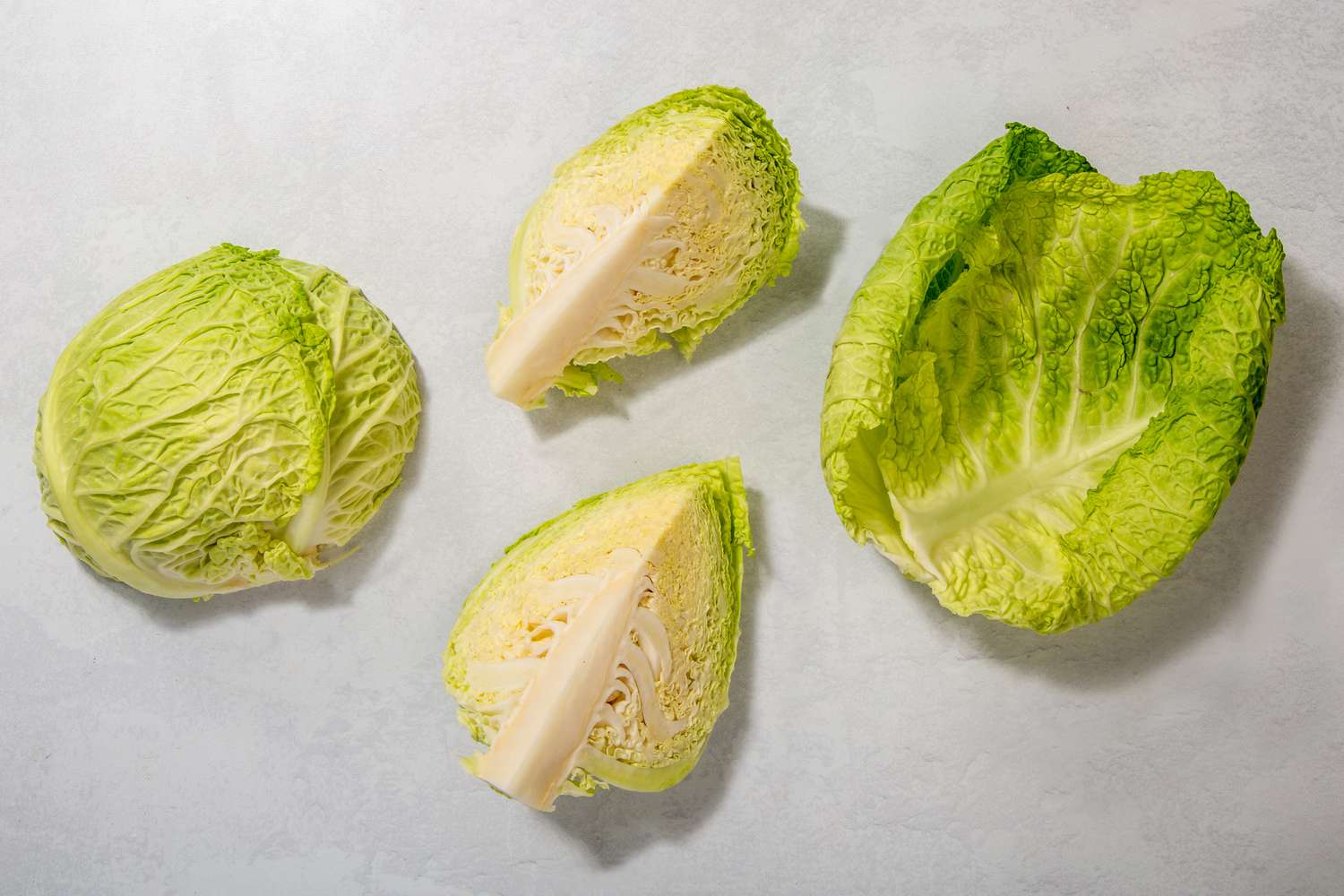
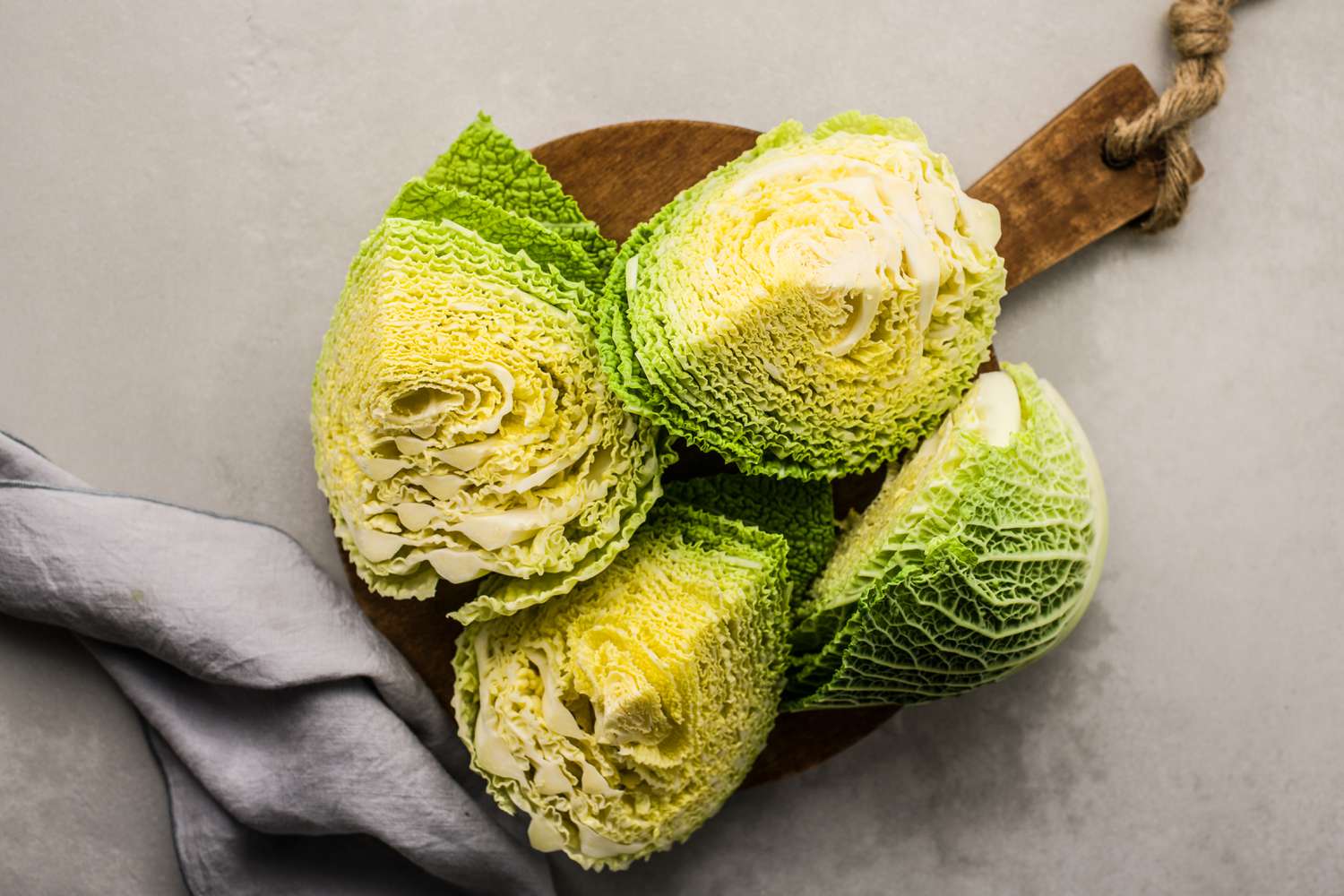
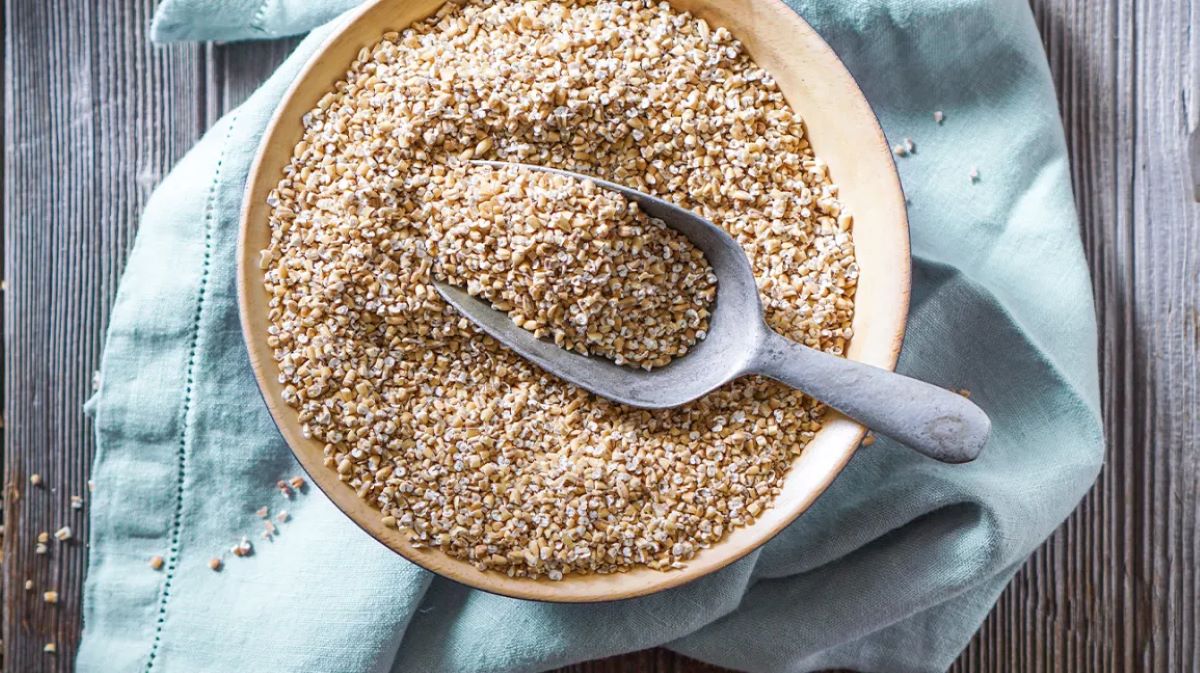
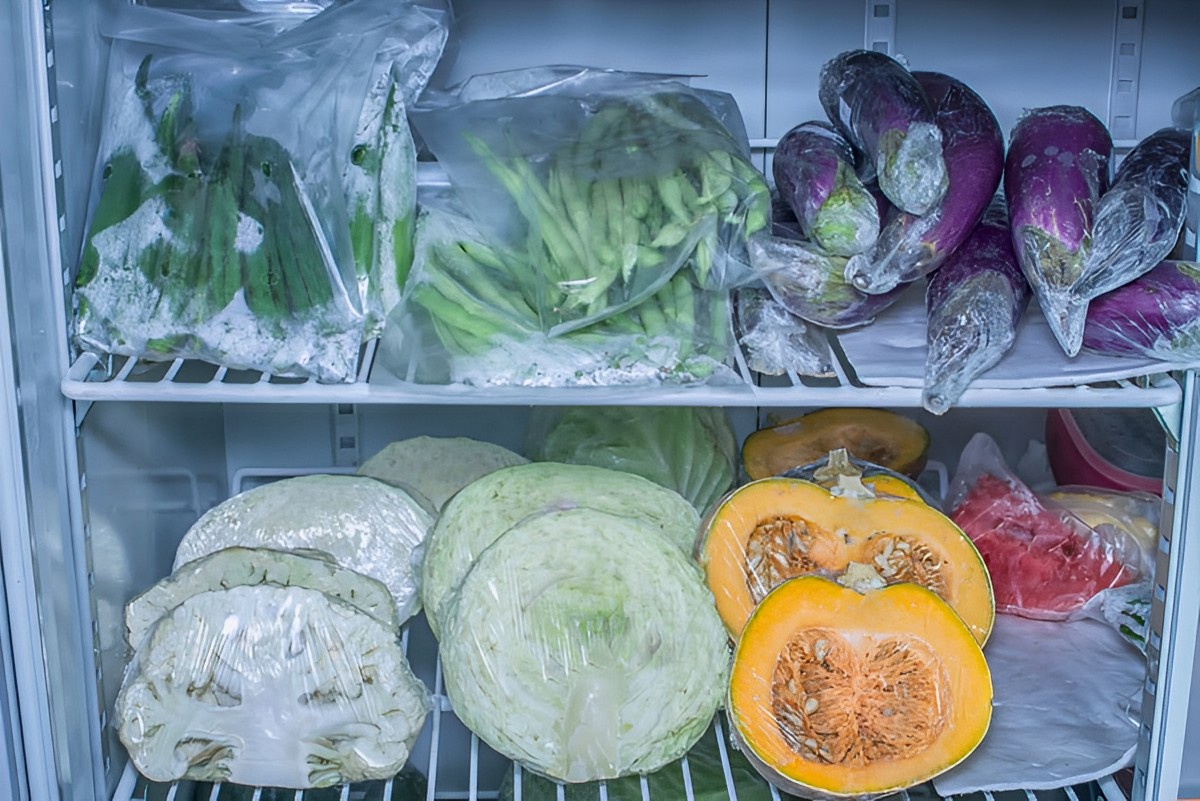
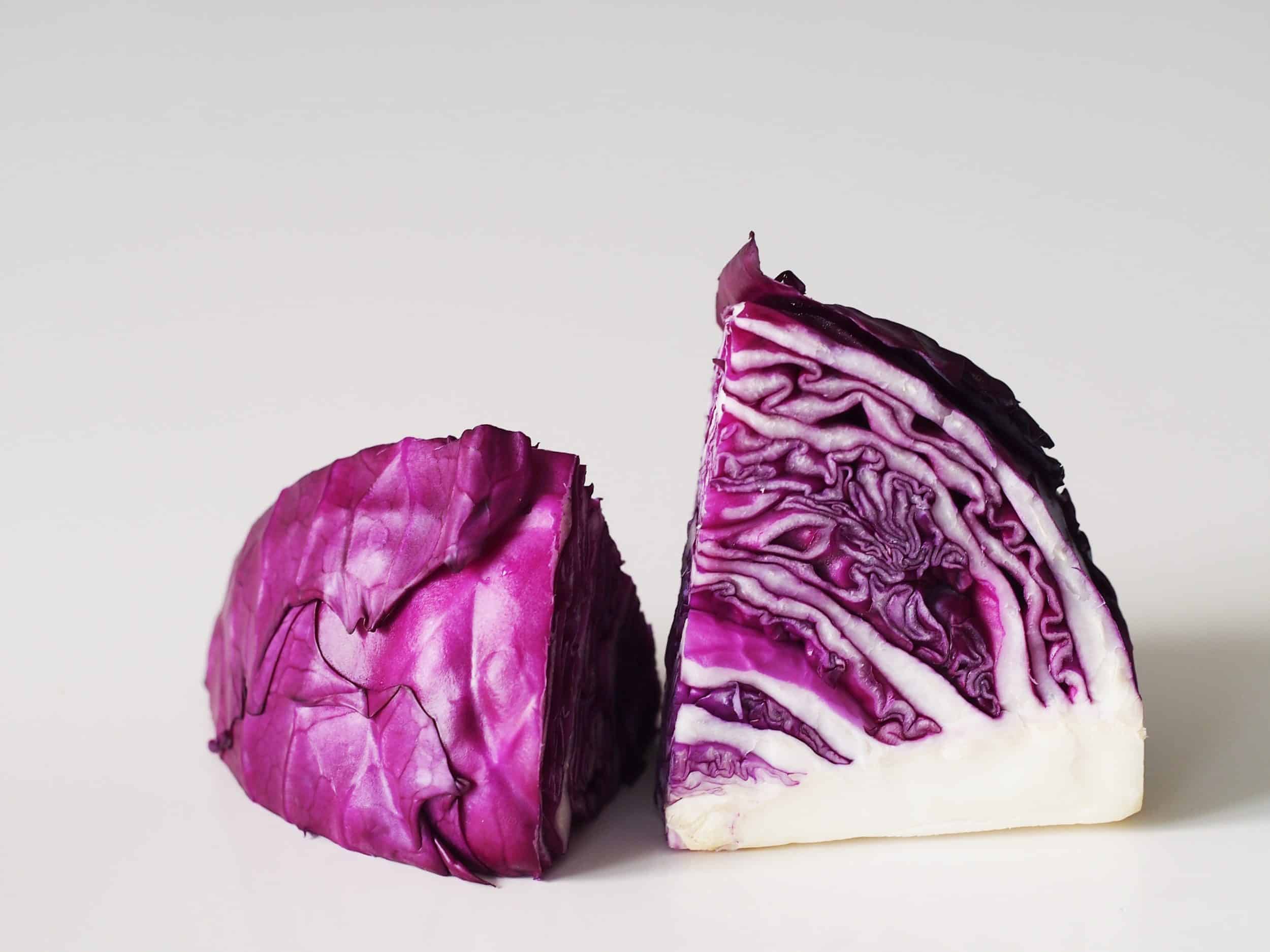









0 thoughts on “How To Store Cut Cabbage Long Term”